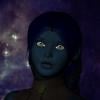Texture / Material for Stone City
 Sassanik
Posts: 340
Sassanik
Posts: 340
Okay stupid user question here.
I am trying to make a city that looks "old" I am thinking like made out of adobe? or some other stone material? Under the normal material settings I found the city maps for high tech cities / modern cities but I am not finding anything that looks more like a stone type material?
I have gone into the advanced image editor settings but I am not really getting the feel that I am looking for.
Suggestions? Ideas? Thanks!
Amy


Comments
Firstly, thanks for asking in the Bryce forum. :)
Secondly, there's no such thing as a stupid question. :)
Thirdly, It may help if you posted a picture of your scene so far so we can get an idea of the shapes it's going to be covering.
But in the meantime, in the material library in the same sub folder as you found the city maps, there is a section called walls where you will find several stone materials including one called Encrusted, one called Stone Wall and one called Cave Wall (as well as brick walls and some others). You may find that one of these will do for what you want, but if you wanted go a little more advanced and you have Bryce Pro, you will also have (or at least have access to if you haven't installed them), David Brinnen's Pro Materials.
In the Pro Materials, there are several materials that can be used for stone wall effects and with some tweaking in the Bryce Mat Lab can be made to look like rough built stone walls. Highland, Volcanic Island and Canyon (amongst others) will give this effect.
I knocked this together really really quickly so it's not perfect, but gives you an idea of the texture you get on vertical surfaces. With some tweaking in the mat lab, you can remove the grass on the horizontals or change it to look more like some sort of roofing material.
Hope this helps :)
Also, especially for a stucco look there are mats in the mat library that can be tweaked, All I have done here is reduced the bump on some of them
Pitted concrete Cave wall Weathers sandstone
Light sandstone Cobbled stome Cracked clay pot
Weather beaten concrete Another cave mat Wobbly stone ( these 3 from David Brinnen )
Thank you for the suggestions!
I am looking for a fairly regular pattern, I looked at the cobblestone one but it strikes me as too irregular?
An example of the kind of effect I am thinking below.
I am imaging like adobe city or a marble style?
Amy
So I think I am starting to understand the texture editor more.
Here is what I cam up with this morning playing around with it.
Hi Amy;
Another suggestion you might consider is to create your own texture with a graphics program such as Paint Shop Pro, Photoshop, Gimp or whatever you have access to. Over the years many of the textures I have used on projects including my own buildings are materials I had created myself and then brought them into the material lab.
One caveat to using your own textures. Prior to assigning them to objects such as buildings, save your scene first. Then bring your textures into the material lab and save the texture there prior to using. I have learned this the hard way as sometimes if you go directly from the loading of a new texture to your scene, Bryce will sometimes crash. Don't know if this just me or the nature of the beast but I have had many crashes over the years like this. If you save your material first then if you crash when trying to load it you haven't lost anything.
I have put quick example below of what I did to create a quick "Sandy Texture Material" to assign to a cube primitive. The Texture started as a 200x200 pixel square in Paint Shop Pro which I then used a "fawn" color on and then gave the image some noise. It was saved as a jpg file and then loaded into the Bryce Material lab.
Hope this of some small help :)
Bruce
PS: Sorry if I state the obvious on any of this as I don't know how long you have had a background in learning Bryce..
Thanks for sharing Bruce, we also learn from the questions put forth by others. Have a nice weekend.
@Bruce: Nice results, and thanks for the information.